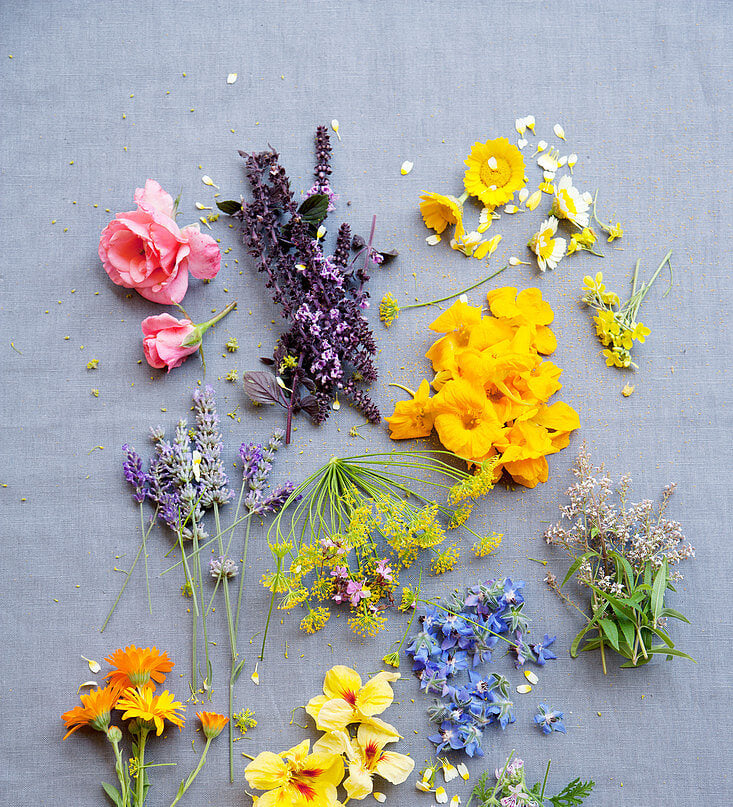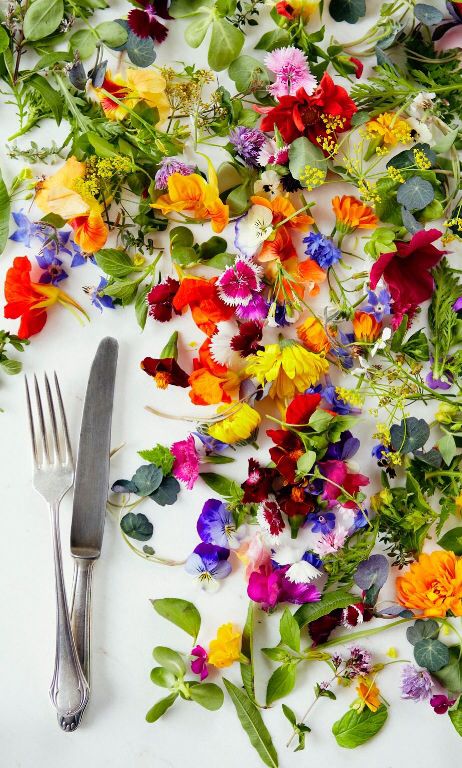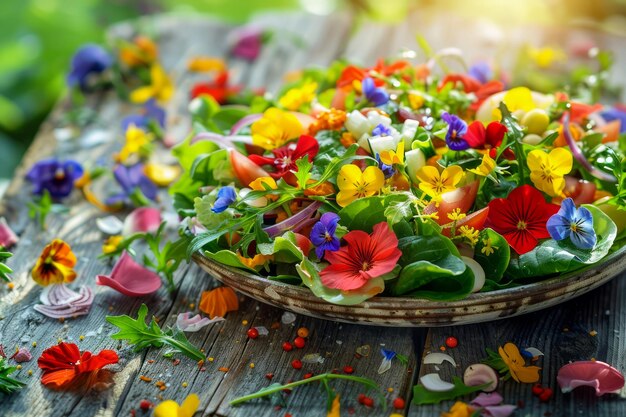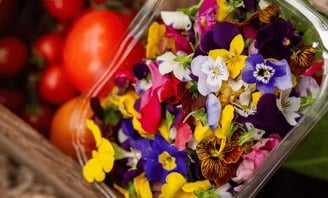Edible Flowers
Edible flowers are blossoms that humans can consume safely. They have been used in cooking and medicine for centuries across various cultures. Edible flowers can add color, flavor, and fragrance to dishes, making them beautiful but also tasty and aromatic.






Some popular edible flowers include:
Nasturtiums: These flowers have a peppery taste, similar to watercress. They are often used in salads for a burst of color and flavor.
Pansies: Pansies have a mild, slightly grassy flavor. They are commonly used as garnishes on desserts and in salads.
Lavender: Lavender has a sweet, floral taste and is used in baking, teas, and savory dishes.
Roses: Rose petals have a delicate flavor that can range from sweet to slightly spicy. They are used in syrups, desserts, and as decorative elements.
Hibiscus: Hibiscus flowers are tart and tangy, often used in teas and beverages.
Benefits of Edible Flowers
Nutritional Value: Edible flowers are rich in vitamins and antioxidants. They can provide essential nutrients such as vitamin C and various beneficial compounds that support overall health.
Antioxidant Properties: Many edible flowers contain antioxidants that help protect the body against oxidative stress and reduce inflammation.
Digestive Aid: Some flowers, like chamomile and dandelion, have properties that can aid digestion and soothe the stomach.
Aesthetic Appeal: Edible flowers add color and visual appeal to dishes, making meals more attractive and enjoyable.
Flavor Enhancements: They can impart unique flavors to dishes, ranging from sweet to spicy, enhancing the overall taste experience.
Uses of Edible Flowers
Culinary:
Salads: Flowers like nasturtiums and violets can be used to add color and flavor to salads.
Baking: Lavender and rose petals are often used in baked goods such as cakes and cookies.
Garnishes: Pansies and other small flowers make beautiful garnishes for both sweet and savory dishes.
Teas and Beverages: Flowers like hibiscus and chamomile are popular in teas and other drinks.
Decorative:
Cakes and Pastries: Edible flowers are commonly used to decorate cakes, cupcakes, and other desserts.
Cocktails: They can be used to add a touch of elegance to cocktails and mocktails.
Health and Wellness:
Herbal Remedies: Some edible flowers have medicinal properties and are used in herbal teas and remedies.
Aromatherapy: Flowers like lavender can be used for their calming and relaxing effects.


